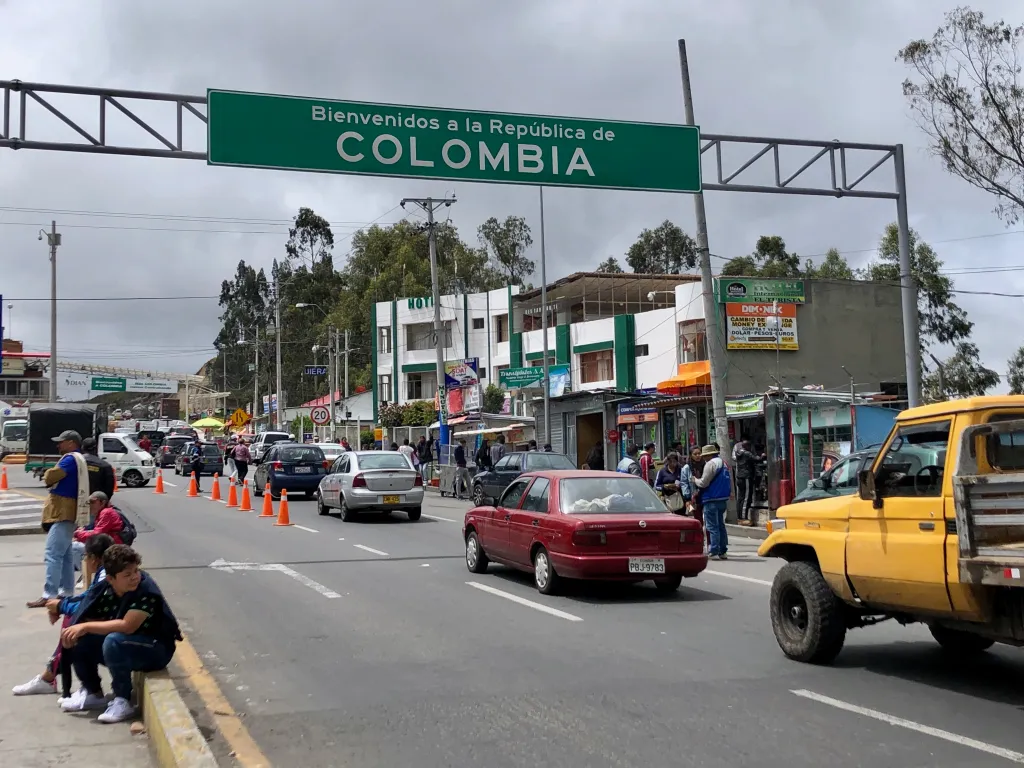More than 111 million citizens of the CAN twill be able to travel through member countries more easily.
With the recent commencement of a move enacted last year, Ecuadorian tourists will now be able to circulate with their car, with an Ecuadorian license plate, in other countries of the Andean Community of Nationals (CAN) for a period of up to one year. This change will allow the vehicles to leave and enter the territory of other member countries, tax-free, four times longer than the previous 3-month limit. The decision to extend the limit was made on October 21, 2021, at a meeting of the CAN Commission in which representatives from Ecuador, Bolivia, Colombia and Peru participated.
The decision became law last month, as by CAN rules, these types of changes take effect 180 days after its regulations are published in the Official Gazette of the Cartagena Agreement.
This decision facilitates the entry, stay and exit of vehicles for private use. By increasing the visitation limit, the organization hopes to promote tourism in member countries. Jorge Hernando Pedraza, CAN Secretary General, said on his Twitter account that the new Andean standard offers opportunities for the more than 111 million CAN citizens to circulate in other countries and that “it will contribute to the reactivation of the tourism sector and therefore to the economic and social recovery of our region.”
What does the new decision say?
The October decision– number 884 – replaced number 50, the Regulation of the Temporary Internment Regime for Private Use Vehicles, that was enacted in March 1972.
At a meeting in November 2020, the Andean Committee on Customs Affairs agreed to update decision 50 to “adapt it to the facilities and technological advances implemented by the customs authorities of the member countries.” The Committee approved the update project in September 2021 and the CAN Commission made the final decision on October 21st.
The new regulation says that each member country will allow the entry, stay and temporary exit in its territory of vehicles for private use of tourists who come from any of those nations. The cars will be able to enter free of import taxes and other surcharges. However, fines and penalties will be applied for non-compliance with traffic regulations, departure times and other provisions. In addition, these cars must enter and exit through the official customs control points.
Another condition is that the car entered is only used in a private way by the tourist. The document further says that if it is not complied with, “the improper use of the vehicle will be presumed” and corresponding actions will be taken depending on the legislation of each country.
With decisions 50, tourists could also temporarily enter other CAN countries with their vehicles exempt from the payment of import values. However, the period of stay was more limited. The 1972 regulation said that to do so they had to have an Andean Customs Pass Book that was valid for one year, but tourists could only stay in the country they were visiting for periods of three months within that year.
With the new decision, the authorization —which is issued by the customs authorities of each country— will also be valid for one year from its issuance. However, it does not establish a maximum period of stay in the country within that year. The decision only says that this will be established by the country in which the tourism will take place and will depend on the residence permit that the immigration authority of the country of origin gives the tourist.
The length of stay of vehicles is not the only one that has been extended recently between CAN countries. On August 11, 2021, the Andean Migration Statute entered into force, which allows the circulation of temporary and permanent residence for Andean citizens in Bolivia, Colombia, Ecuador and Peru. The decision changed the allowed period from 90 days to two years.
In addition, it allows citizens of the 4 countries to move to live or work temporarily or permanently through the four million square kilometers that the transnational community encompasses; doing so with a mechanism similar to that of the citizens of the European Union who can mobilize between its member countries.
What is the CAN?
CAN is an international organization that works to “achieve comprehensive social and economic development, more balanced and autonomous, by strengthening Andean integration, with projection towards South America and Latin America,” according to its website.
It was founded on May 26, 1969, with the signing of the Cartagena Agreement, whose main instrument was the Constitutive Treaty, which defines the “objectives of Andean integration, defines its institutional system and establishes the mechanisms and policies that must be developed by the community bodies.” In 1996, the Cartagena Agreement took the name of the Andean Community.
Its General Secretariat is in Lima, Peru. And, since July 17, 2021, President Guillermo Lasso, of Ecuador, assumed the pro tempore presidency of the organization.
It is currently made up only of Bolivia, Ecuador, Colombia and Peru. Venezuela and Chile were previously members of the organization.


This article only mentions “cars”. What about motorcycles?